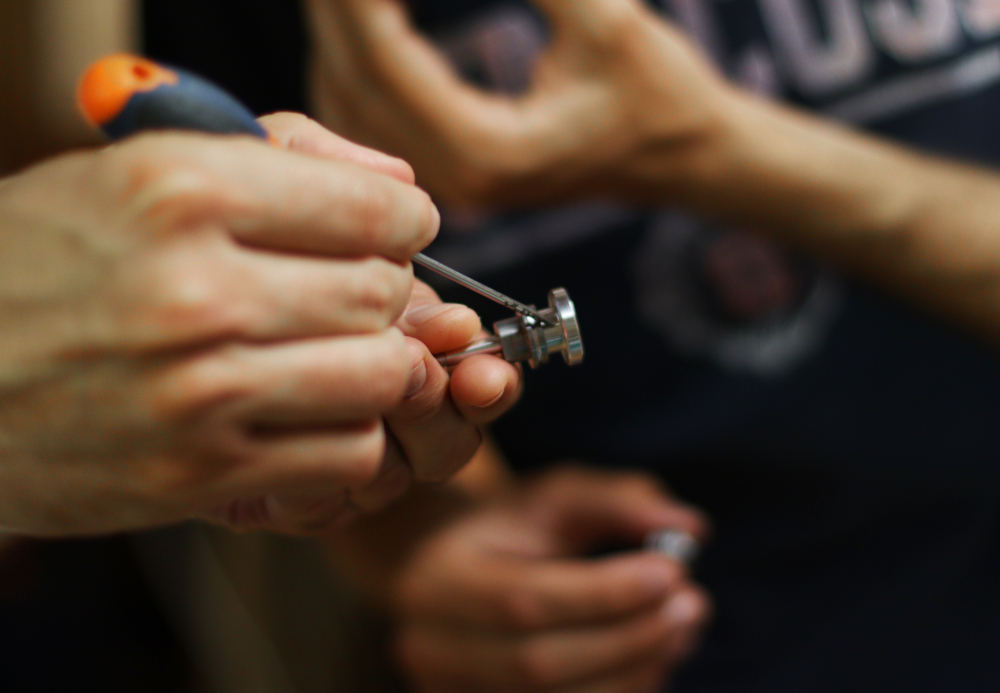Since the beginning of ORTHOPUS’ project, we have prioritized accessibility and users’ needs. A huge number of persons aren’t indeed equipped with the assistive technologies they need even in 2021 in the so-called developed countries such as France. So, how do we develop more accessible medical devices?
“Effective inclusive innovation is useful to the whole of humanity. It is affordable and accessible to the greatest number of people in the world”
explains Navi Radjou. This innovation expert has popularized the concept of “frugal innovation” in his Ted Talk.
In the same way, we seek to optimize what already exists instead of conceiving new complex and sophisticated products for privileged persons. As David Gouaillier, ORTHOPUS’s CEO said:
“Why develop new technologies when what already exists isn’t accessible for most people”
Technical aids available are either qualitative and very expensive or cheap and poor quality. We place our solutions at the crossroads between these two main trends: keeping the industrial quality while lowering prices.
This technical challenge stimulates our robotics engineers: they must think differently, show ingenuity and use all their experience to find the best solutions.
These are our 4 drivers that help us to develop accessible and efficient solutions:
1 – Use what already exists
We are looking for sturdy technologies among the devices created in the past and define the best way to produce them in 2021. Our arm support’s engine block is for example based on components that already exist. This way of proceeding is a time-saving in the engineering phase and a quality and durability guarantee because the effectiveness of those technologies has already been proven.
2 – Optimize to lower the prices
Breaking down a medical device therewith keeping only the essential is a long process. We spend time looking for the most efficient, less expensive components and talking with our suppliers to optimize the manufacturing in order to lower the final cost for the user.
3 – Pay attention
We collect users’ needs and ideas, and we involve them in the devices’ development process (specifications, aesthetic choices, users feedback).
We are currently gathering testimonials from users and all other actors that occur in the patient pathway (family and professional caregivers, Doctor of Physical and Rehabilitation Medicine, occupational therapist, medical supply distributor). From our first sales, we will set up some discussion spaces for equipped persons to initiate the emergence of improvement’s suggestions.
4 – Communicate with transparency
Unlike the current health system, which is often opaque for the patient, the transparency is rooted in ORTHOPUS’s DNA. For example, we detail our price construction from the raw material cost, to the assembly, shipping, the R&D investment and our margin. We also want to improve the user’s appropriation of the device thanks to suitable documentation, but also by creating an open source library of 3D printed shells. Each new design will be uploaded online, allowing the users to take and hack their favorite kits on their device.
Designing sustainable and accessible devices: that’s our way of innovating. A more equitable and cooperative healthcare system will be possible if we take into account all users’ needs. It is high time to act.
Spécialisée dans la culture scientifique et technique depuis dix ans, Mona a une expérience au croisement de l’économie sociale et solidaire, de la fabrication numérique et du monde des fablabs. Ses compétences vont de la communication transmedia, à l’animation de communautés en passant par l’événementiel. Chez ORTHOPUS, elle met en œuvre et anime la stratégie communication et marketing.

